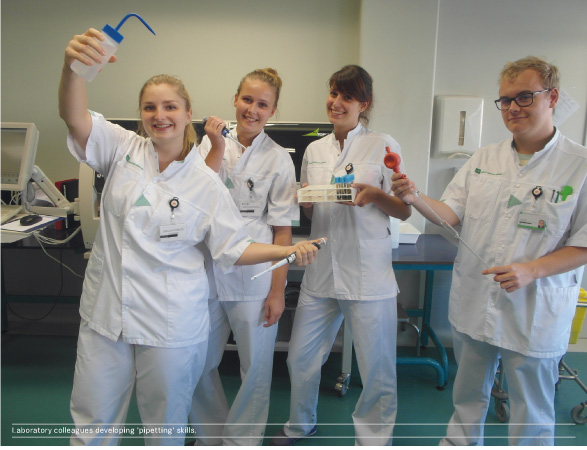Transforming the pressure of accreditation into team engagement.
With the requirement that ISO 15189 imposes on medical laboratories, which approach can motivate personnel to embrace the assessment criteria?
As an internationally-recognised benchmark for quality management systems and competence standards, medical laboratories are constantly under pressure to secure ISO15189 accreditation. But increasing stringency of the latest 2012 version of the standards model and even more expected demands in the next ISO15189 version, currently under review, how can management engage staff so they will and can meet the challenges?
Overcoming the challenges
The most recent ISO15189 is very demanding and I’d even say it goes too far in some areas. Securing accreditation is not always easy or fun.
One of the most important challenges is how staff can be interested in both management and technical processes as required by the standard. A lot of the time, personnel don’t understand why it’s important for them to observe ISO criteria and, for example, to follow training with periodical evaluations again and again or to perform internal audits periodically. But the latest ISO15189 is very clear, you must be transparent and demonstrate how you fulfil the complete Plan-Do-Check-Act (PDCA) cycle in practice.
Therefore, it’s important that you explain the ISO criteria well more than once to staff and explain the consequences for the team and the laboratory organisation of not meeting the criteria and fulfilling the complete PDCA cycle. It’s also important to show that all procedures provide opportunities for staff to learn new skills and processes, to demonstrate how well the team does the job and that they focus on the end result: a successful external audit that the laboratory organisation has achieved as a full team. It’s a matter of focusing on the positive things rather than the negative aspects of implementing a quality management system.
Focus on personnel strengths
Staff aren’t all interested in the same areas. Some are good at competencies, others at quality control or auditing. In order to foster staff engagement, let individual team members focus on what is of interest to them. The fact is, that it’s incorrect to assume that management always knows best. It doesn’t. Get solutions from the staff who are on the work floor. They often know the most efficient and effective way of dealing with a problem because they tackle it every day. This also means that team members feel engaged and own their part in the ISO accreditation process.
It’s also important to know when to step in and when to step back. There is no point in forcing people. For example, in order to engage and motivate staff we hold a lot of meetings but we start with the 5% to 20% of staff who are engaged and enthusiastic about implementing the ISO requirements to lead the way of quality improvement. There will always be sceptics, but the few who are enthusiastic will eventually inspire everyone to go on a quality improvement expedition by talking and demonstrating the benefits for their own work and suggesting the possibilities for a personal contribution. Once the sceptic notice that there are tangible results of the team efforts, they will of course end up joining the quality improvement process naturally.
Take different cultures into account. My lab is the main one in a network of satellite labs, each facilitating a different laboratory process. Each lab has also its own team culture which works well for the site. So, it would be a mistake to impose our culture - the culture of the largest organisation - onto the smaller satellites. In order to work well all together, the best approach is to harmonise the different procedures in all the laboratories while retaining its own identity. There is no point in forcing a change of culture. It only serves to make satellite staff feel devalued, alienated and invisible.
Clear direction
Having a crystal-clear objective with a possibility to anticipate organisation developments, is indispensable. If you are at rating 6, aim for rating 8. Don’t always try to jump up to level 10. It’s more realistic and more satisfying because jumping up a couple of levels is a very good achievement.
Above all, at the end of the day, it’s all about the patient. That’s also why we have chosen a job in healthcare and we must keep that in mind.
Key Points
- During process, focus on individual interests of personnel to encourage engagement
- Allow enthusiastic staff to go on the accreditation expedition and lead the way for sceptics
- Explain clearly and in a timely manner why implementing a quality system is necessary so staff can understand
- Focus on the end result and aim for it as a team
- Don’t impose an alien company culture on a satellite lab
- Create clear objectives
- Put the patient at first in all lab activities




